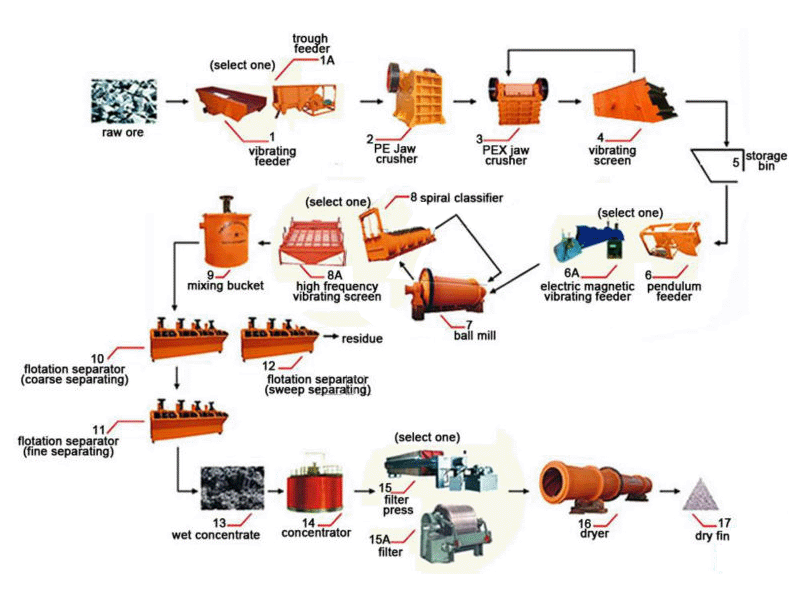Flotation Process In Mining

Flotation process, in mineral treatment and mining, process for concentrating the metal-bearing mineral in an ore. Crude ore is ground to a fine powder and mixed with water, frothing reagents, and collecting reagents. When air is blown through the mixture, mineral particles cling to the bubbles, which rise to form a froth on the surface. The waste material (gangue) settles to the bottom. The froth is skimmed off, and the water and chemicals are distilled or otherwise removed, leaving a clean concentrate. The process, also called the froth-flotation process, is used for a number of minerals, especially silver.
Flotation is a mineral separation process done in the water medium. It is based on the difference in the surface properties of the mineral and gangue. The surface of the selected mineral is made hydrophobic (water repellent) by the use of selective reagents and these particles get attached to the air bubbles that are introduced in the system and collected as froth whereas the hydrophilic (wetted) particles are left behind in the slurry.
The mineral material separation process produce better results if the particles are well liberated which is achieved by grinding the ore. The recovery of the particles increases with the decrease in particle size to a limit and then it again recovery starts decreasing.





 (Live chat)
(Live chat)